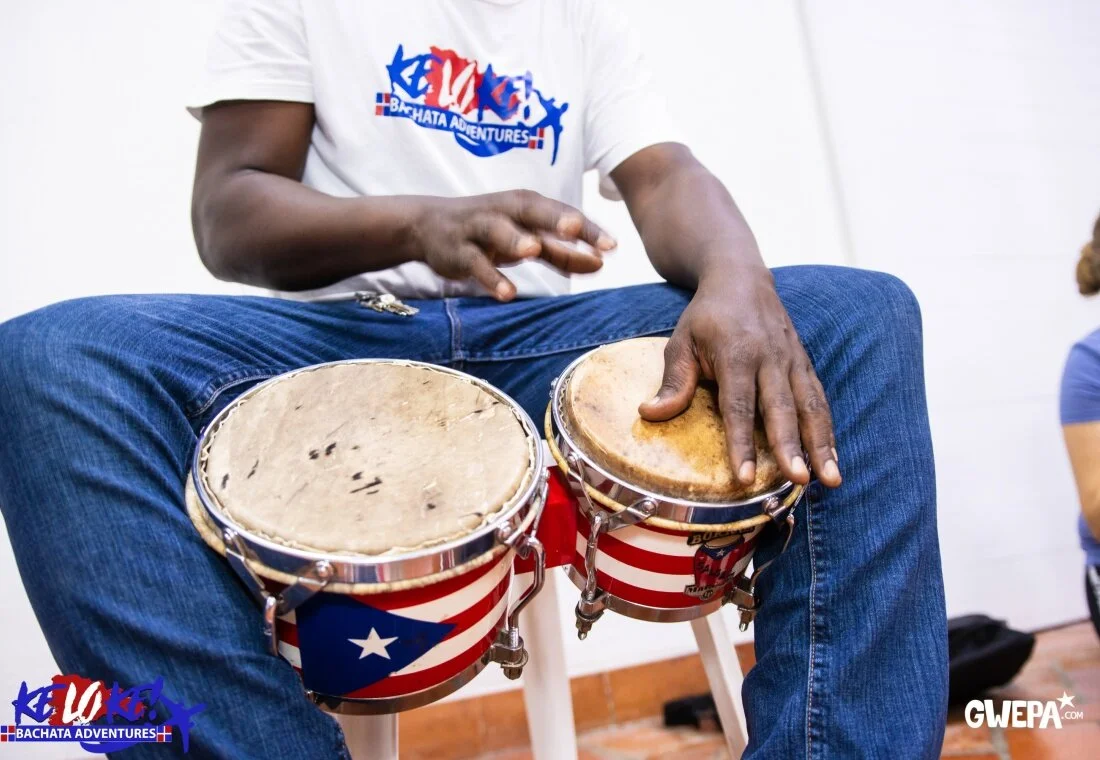THE history of Bachata Dominicana
Bachata is a danceable musical genre from the Dominican Republic, within what is considered urban folklore. It derives from of the rhythm bolero, with influences from other styles such as Cuban son and merengue.
Bachata developed in the urban “campesino” communities in the countryside and was mostly associated with the poor country folk. This bolero-based guitar music, born in the mid to late 50s, was originally based on a simple blues-like structure and like its predecessor, bolero, the lyrics often depicted stories of love and romance, which was at the heart of the rhythm. The word Bachata denoted an informal gathering where people would gather to drink, eat, dance, play music at a family style sharing in a very joyful manner.
After suffering heavy depression from Dictator Trujillo and his regime, which considered bachata to be of low-class, Bachata became heavily suppressed and marginalized. During its dark ages the music could only be heard at bars and brothels in the capital Santo Domingo and became associated with an underground community.
Trujillo’s demise in 1961 paged way for the emergence of Bachata as a more established rhythm, now that it was recorded in the music industry by its recording pioneer, Jose Manuel Calderon. As other prospects began to follow suit the music began to evolve rapidly both in its instrumentation and lyrical themes.
During the late 1970s and early 80s, the music went through another development as more modern instruments were introduced like the electric bass, steel string guitar, guira and additional rhythms. The lyrics went from bolero romántico campesino to música de amargue or "bitterness music." This concept referred to the state of melancholy caused by heartbreak, always reflected in the theme of the compositions. Its transmission during those years, was limited to few radio stations, since it was considered as vulgar music.
Originally the instrumentation of bachata featured nylon string guitars, maracas, bongo, and bass. This 60s sound is what is referred today as traditional bachata. The next generation started in the late 80s, early 90s with pioneer Blas Duran who lead the modernization of bachata with use of electric steel string and guira. This became the staple sound of Bachata until the sound was revolutionized during the 21st century by the likes of Juan Luis Guerra, Monchy & Alexandra, and Aventura. This new sound brought more American jazz, pop, rock, and R&B influences, which helped the genre reach a wider international audience becoming now the most popular Latin genre globally and one of the most danced rhythms in the world.
The dance style bachata has, alongside the music, also been changing over the years creating different styles when it comes to dancing it, such as, for example, modern bachata, sensual bachata and fusion bachata. However, the style closest to how it is actually danced in the Dominican Republic is the Dominican bachata, which is the main inspiration behind all the work the Bachata Dominicana RD team does.
